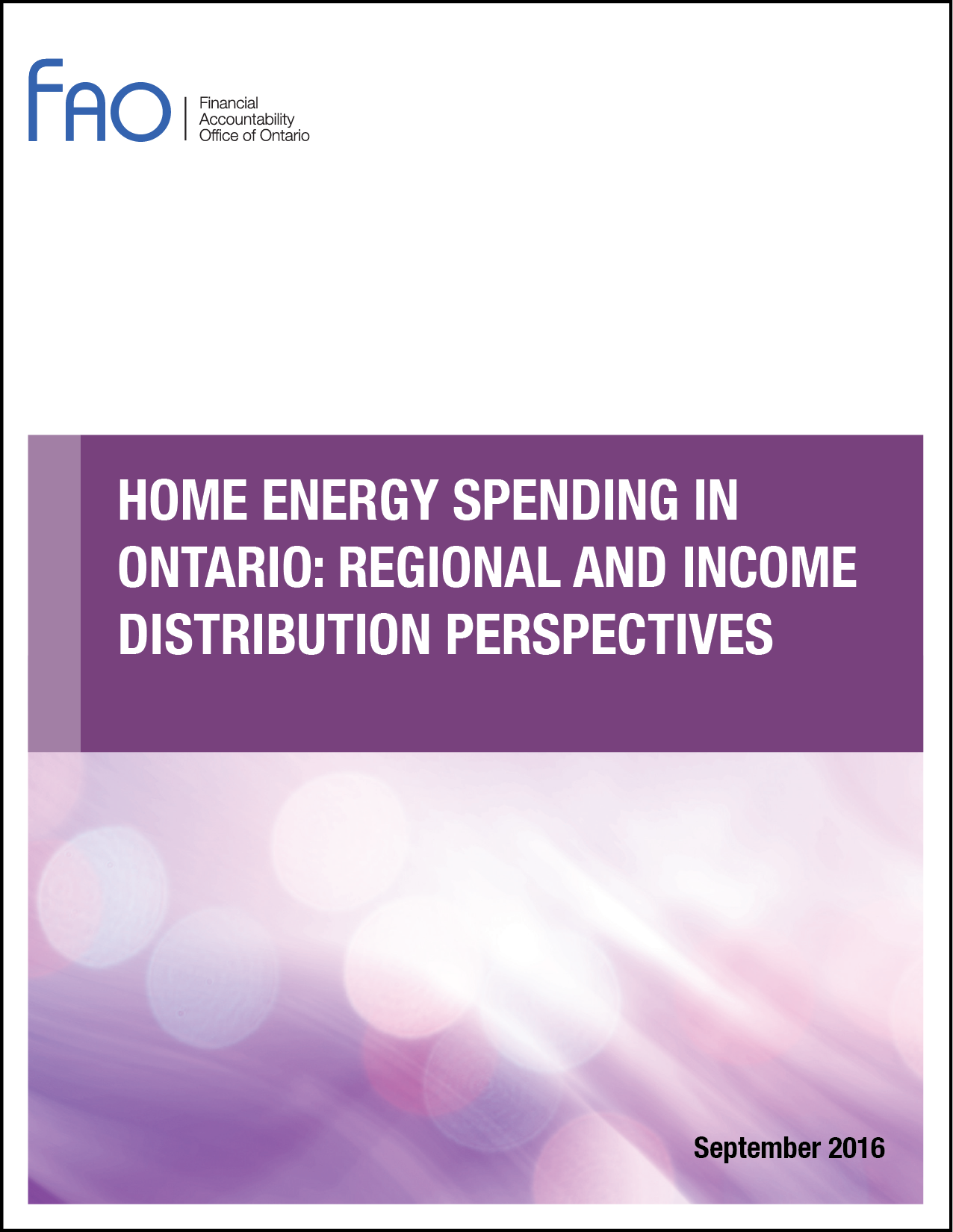Home Energy Spending in Ontario: Regional and Income Distribution Perspectives

This commentary answers two questions: 1) on average how do home energy costs in Ontario compare across regions of the province? and 2) how much do Ontario households at different levels in the income distribution spend on home energy?
Home Energy Spending in Ontario: Regional and Income Distribution Perspectives, Financial Accountability Office of Ontario, 2016.

